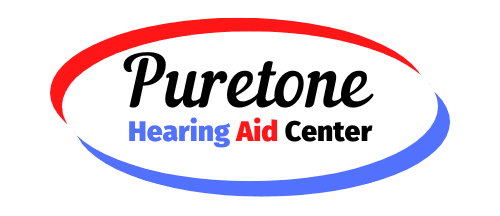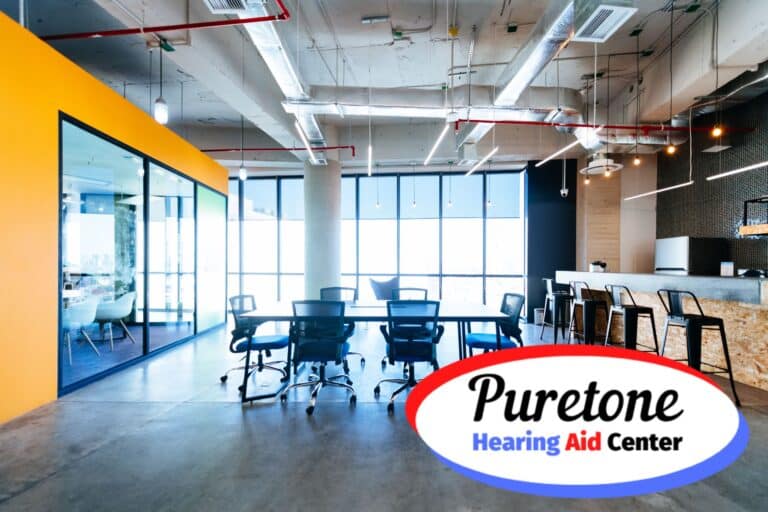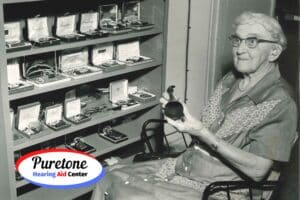Creating an inclusive and accommodating work environment is essential for individuals with hearing loss. It is important to understand the impact of hearing loss in the workplace and to implement strategies that enhance communication and overall workplace experience. In this article, we will explore various solutions and techniques that can help individuals with hearing loss thrive in their professional lives.
Understanding Hearing Loss in the Workplace
Hearing loss is a common condition that affects individuals of all ages. It can make communication challenging, especially in the workplace. It is important to understand the different types and degrees of hearing loss to address the specific needs of employees. Whether it’s mild or profound, hearing loss can have a significant impact on an individual’s ability to effectively communicate with colleagues, supervisors, and clients.
Creating an Inclusive Work Environment
Employers play a crucial role in creating an inclusive work environment that takes into consideration the needs of individuals with hearing loss. By promoting inclusivity and accommodation, employers can create a positive and supportive atmosphere for all employees. An inclusive work environment benefits not only individuals with hearing loss but everyone, fostering a sense of belonging, understanding, and productivity.
To foster a culture of inclusivity and understanding, employers can take several steps. Encouraging open communication, providing disability awareness training, and promoting teamwork and collaboration can make a significant difference in creating an inclusive workplace experience. By educating colleagues about hearing loss, promoting patience and empathy when communicating, and ensuring accessibility, employers can empower employees with hearing loss to thrive in their roles.
Assistive Technologies for the Workplace
Advancements in technology have brought about various assistive listening devices and technologies that can greatly enhance the workplace experience for individuals with hearing loss. These devices can amplify sound, reduce background noise, and improve speech clarity. Hearing aids are one of the most common and effective assistive technologies for individuals with hearing loss. These devices are discreet, comfortable, and can be customized to meet specific hearing needs.
In addition to hearing aids, there are other assistive technologies worth considering, such as FM systems, loop systems, and captioning services. FM systems use a microphone to transmit sound directly to a receiver, ensuring clear communication in noisy environments. Loop systems utilize electromagnetic signals to transmit sound directly to a hearing aid or cochlear implant, reducing background noise. Captioning services can help individuals follow conversations or presentations through real-time captions displayed on a screen.
Choosing the right assistive technology depends on individual needs and workplace requirements. Consulting with an audiologist or hearing care professional can help determine the most suitable technology for specific workplace needs.
Effective Communication Strategies
Effective communication is crucial when working with individuals with hearing loss. Clear and concise communication ensures that information is understood and reduces the likelihood of misunderstandings. When communicating with someone with hearing loss, it is important to face them directly, speak clearly and at a moderate pace, and maintain eye contact. Offering visual cues, such as facial expressions and gestures, can also enhance understanding.
Creating a communication plan within teams and among colleagues can significantly improve workplace communication for individuals with hearing loss. This may include using email or messaging platforms for important announcements, having regular check-ins to address concerns, and establishing a system for requesting clarifications or repeating information.
Workplace Accommodations
Employers have a legal responsibility to provide reasonable accommodations for individuals with hearing loss. Reasonable accommodations can include providing assistive listening devices, ensuring access to captioning services, making modifications to the physical environment (such as reducing background noise or optimizing lighting), and implementing flexible work arrangements.
Employees with hearing loss should be proactive in requesting reasonable accommodations from their employers. By clearly communicating their specific needs and providing supporting documentation from a hearing care professional, individuals can ensure they receive the necessary support to succeed in the workplace. Resources such as the Americans with Disabilities Act (ADA) can provide guidance on workplace accommodations and rights for individuals with hearing loss.
Training and Education
Training programs on hearing loss awareness and communication can greatly benefit both employers and employees. Employers can implement training initiatives to raise awareness about hearing loss and its impact on the workplace. These programs can educate employees about effective communication strategies, dispel misconceptions about hearing loss, and promote a culture of inclusivity.
Continued education is also important for employees with hearing loss. Staying informed about advancements in hearing technologies and communication strategies can help individuals adapt and make the most of available resources. It is important to attend seminars and workshops that focus on improving communication skills and staying up to date with the latest assistive technologies.
Celebrating Diversity and Inclusion
Embracing diversity in the workplace, including individuals with hearing loss, is key to creating a thriving and innovative work environment. Inclusivity promotes creativity, collaboration, and productivity. By celebrating diversity and equality, companies can attract and retain a talented workforce, while fostering a culture of respect and understanding.
Several companies have successfully implemented inclusive practices. Microsoft, for example, has made significant strides in creating an inclusive work environment. They have introduced various accommodations, such as captioning services, hearing loops, and video remote interpreting services to enhance the workplace experience for employees with hearing loss. By sharing success stories and best practices, companies can inspire others to follow suit.
Enhancing the workplace experience for individuals with hearing loss requires a proactive approach from employers and employees alike. By understanding the impact of hearing loss, creating an inclusive work environment, utilizing assistive technologies, implementing effective communication strategies, providing workplace accommodations, and investing in training and education, individuals with hearing loss can thrive in their professional endeavors.
It is vital that employers recognize the importance of inclusivity and accommodation for individuals with hearing loss. By fostering understanding and making necessary adjustments, employers can create an environment where everyone feels valued and empowered. Together, we can create workplaces that celebrate diversity and provide equal opportunities for all employees.



